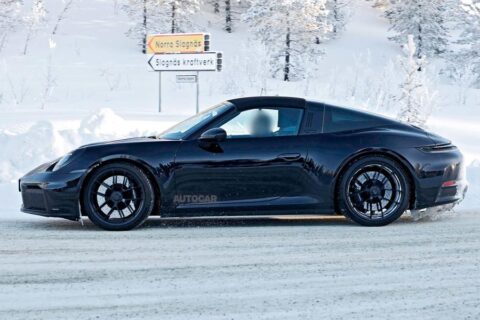The new drivetrain has been developed via a technology transfer between Porsche’s production car and motorsport divisions, in combination with Rimac – the Croatian electric drive specialist in which Porsche holds a 45% stake.
The standard Carrera and Carrera S will retain the existing turbocharged 3.0-litre boxer engine, but it is not confirmed whether they will adopt the 48V mild-hybrid system that Porsche has been developing in partnership with Valeo.
However, with tighter emissions standards looming, these models may well receive electrification and a moderate bump in reserves as part of the 911’s facelift.
Sources have suggested that GTS models could adopt the naturally aspirated 4.0-litre six-cylinder engine used by the 718 Cayman GT4 in place of today’s turbo 3.0-litre unit. But Porsche remains tight-lipped on its plans, saying only that future emissions regulations favour higher-capacity engines.
Among the possibilities for the more sporting 911 models is a new 3.6-litre version of the classic six-cylinder Porsche engine, running a single variable-vane turbo – an engine that, insiders suggest, will form the basis of the next-generation 911’s powertrain in 2027.
The low production volumes planned for the successor to today’s 911 GT3 suggest it will retain its naturally aspirated 4.0-litre six, albeit with a moderate lift in reserves.
A fully electric 911 is not immediately planned. Instead, Porsche envisages its long-running coupé and cabriolet progressing into the future with electrified combustion engines in combination with new e-fuel derivatives to provide net-zero emissions.
992.2: The updated Porsche 911 at a glance

Enhanced cooling: To boost cooling for the front-mounted radiators and brakes, Porsche has given the new front bumper distinctive air ducts that house five vertical louvres in place of the three horizontal louvres on each side of the existing model. It is most likely that they will incorporate some sort of active operation to better balance cooling and aerodynamic drag. There is also a larger central air duct book-ended by additional cooling channels on either side.
